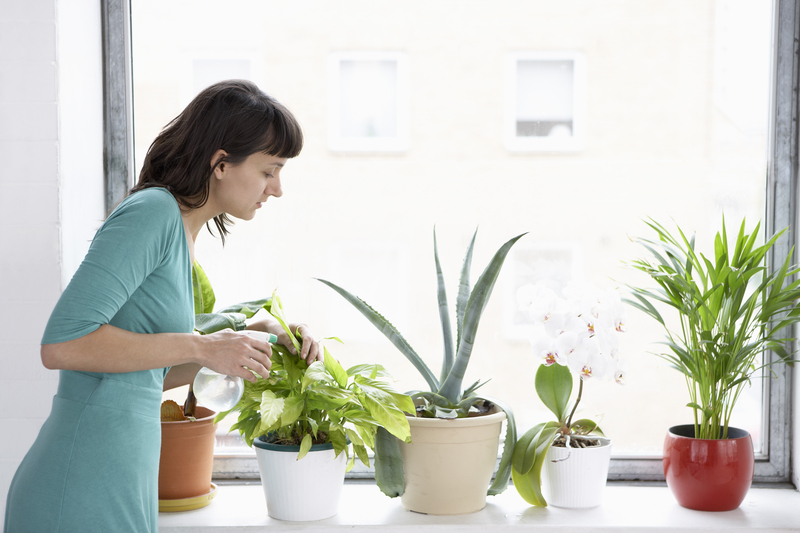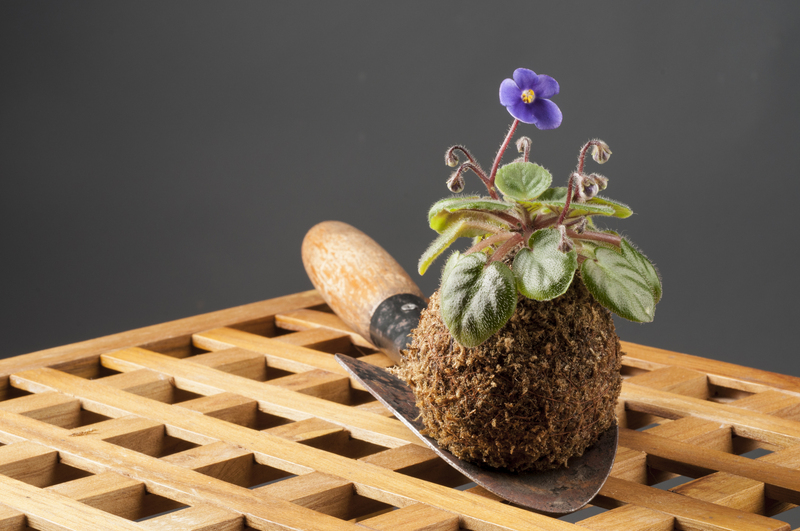3 Steps to Building a Dynamic, Moveable Garden Space
Are you dreaming of creating a dynamic garden space that's not only beautiful but also versatile and mobile? Whether you have a small balcony, a rented patio, or simply crave the freedom to rearrange your outdoor oasis at will, a moveable garden offers the perfect solution. In this guide, we'll cover three essential steps to building a moveable garden that thrives in limited spaces and adapts to your evolving needs. Follow these steps to unlock the joys of portable greenery and have flexibility at your fingertips!

Why Choose a Moveable Garden Space?
Before we embark on the practical steps, let's understand the benefits of a dynamic, moveable garden:
- Flexibility: Move plants for optimal sunlight or shade as seasons change.
- Adaptability: Rearrange your layout for entertaining, privacy, or style changes.
- Mobility: Perfect for renters, balcony dwellers, and those planning to move homes.
- Plant Health: Easily rotate plants to prevent disease spread and optimize growth.
- Year-Round Enjoyment: Protect delicate plants by bringing them indoors during cold snaps.
A portable garden setup creates a living tapestry that evolves with you--season after season, year after year. Let's dive into the actionable steps to get started!
Step 1: Plan Your Moveable Garden for Maximum Versatility
Evaluate Your Space and Goals
Every successful moveable garden begins with a solid plan. Start by evaluating your available space, considering factors such as:
- Size and Shape: Measure balconies, patios, decks, or corners with good sunlight exposure.
- Sunlight: Observe how sun and shade shift throughout the day. South and west exposures get the most light, ideal for sun-loving plants.
- Access and Movement: Ensure there's enough room to move containers and for people to walk comfortably.
- Weight Limitations: Upper-story balconies and decks may have weight restrictions; always check your lease or building guidelines.
Set your goals. Do you want a herb garden, vibrant flowers, a lush green retreat, or even a small veggie plot? Identifying your priorities will help you select the best containers and plants.
Choose Portable and Multipurpose Containers
Your container selection is the secret to a dynamic and moveable garden space. Here are top tips for choosing containers:
- Lightweight Materials: Opt for plastic, resin, fiberglass, or lightweight composites over heavy ceramic or concrete.
- Built-in Mobility Features: Look for pots with wheels or add pot caddies and rolling plant stands.
- Size Variety: Mix small, medium, and large containers for layers--and to easily reshuffle your design.
- Vertical Planters: Maximize tight areas with stackable garden towers, hanging baskets, or wall-mounted planters.
- Self-Watering Options: These reduce watering frequency and help plants thrive during moves or absences.
Pro Tip: Recycled crates, old buckets, and decorative baskets can become unique, moveable plant pots--just ensure proper drainage!
Sketch Your Initial Layout
On paper (or using a garden-planning app), draft a basic layout. Consider sightlines from your favorite chair, traffic flow, and where your containers will get the best light. Remember, unlike a fixed garden bed, you can adjust this design anytime!
Step 2: Select the Best Plants for a Dynamic, Mobile Garden
The plants you choose will determine how successful and easy-to-manage your moveable garden space will be. Here's how to pick the perfect candidates:
Consider Size, Root System, and Growth Rate
- Compact or Dwarf Varieties: Select cultivars bred for containers or small spaces. These plants are naturally smaller but just as beautiful and productive.
- Shallow Roots: Herbs, most lettuces, and annual flowers do well in smaller containers and recover quickly after being moved.
- Slow to Moderate Growers: Fast-growing species may need frequent repotting; choose plants that won't outgrow their pots too quickly.
Mix Edible and Ornamental Plants
Create a garden that's beautiful and productive! Some top moveable garden plant picks include:
- Herbs: Basil, thyme, chives, parsley, mint (mint should be potted alone to prevent spreading).
- Greens: Lettuce, spinach, arugula, and microgreens thrive in containers.
- Dwarf Tomatoes & Peppers: Try varieties like 'Tiny Tim' tomato or 'Mohawk' pepper.
- Compact Fruit: Strawberries, bush blueberries (in large pots), and citrus trees on dwarf rootstocks.
- Annual Flowers: Petunias, pansies, marigolds, zinnias, or nasturtiums add brilliant color.
- Tropical Foliage: Decorative coleus, ferns, or palms create lush visual layers and can be moved indoors seasonally.
Choose Companion Planting Pairs
When space is at a premium, combine plants with similar light, water, and soil needs in the same container. For example:
- Tomatoes, basil, and marigolds (support pest control and growth)
- Lettuce and chives (repel pests, increase yield)
- Mint and nasturtium (attracts pollinators, deters pests)
For eco-friendly pest management, choose plants that attract beneficial insects like ladybugs and bees!
Use Quality Soil and Fertilizer
Great plants in a portable garden space start with premium growing medium:
- Use lightweight, well-draining potting mix.
- Enrich with compost or slow-release organic fertilizer to provide ongoing nutrition.
- Repot and refresh soil every 1-2 years to prevent disease buildup and maintain plant health.
Keep it Simple for Easier Moves
Finally, don't overstuff containers. Overcrowded pots are heavy and hard to transport. Prioritizing fewer, healthier plants leads to a thriving moveable garden!
Step 3: Build Mobility and Adaptability Into Your Garden Design
With your containers selected and planted, it's time to focus on what makes a dynamic garden space truly flexible: mobility and adaptability.
Incorporate Movable Hardscape Elements
- Wheeled Caddies: Place large plant pots and planter boxes on heavy-duty wheeled stands or dollies for easy movement.
- Modular Decking: Use interlocking deck tiles, rugs, or portable wood platforms to create zones you can rearrange seasonally.
- Foldable Furniture: Select stackable or collapsible chairs and tables so you can change the setup quickly for parties or extra space.
- Trellises and Screens: Freestanding or rolling privacy screens let you block wind, create shade, or hide unsightly views on demand.
Develop a System for Moving Your Plants
To make shifting your setup effortless, follow these practical tips:
- Group Similar Needs: Cluster plants that thrive in full sun or part shade together; move as one unit when needed.
- Use Lightweight Watering Solutions: Install drip irrigation lines or use a watering can rather than heavy hoses that can get in the way.
- Label Your Plants: Attach weatherproof labels to pots, indicating plant type and care needs--especially helpful after rearranging!
- Keep a Moving Path Clear: Avoid overfilling the space so plants (and you) can move freely.
Seasonally Refresh and Rearrange
One of the joys of a moveable garden space is following the rhythm of nature and your life:
- Spring/Summer: Bring out heat-loving vegetables, herbs, and annuals for a lush scene.
- Autumn: Shift pots with mums, ornamental cabbages, or cool-weather greens into view.
- Winter: Move containers with tender plants indoors, or focus on structural evergreens for outdoor interest.
- Special Events: Roll out bright blooms for gatherings, or cluster plants for an intimate meditation nook.
Maintain Regular Care and Upkeep
A portable garden is easy to maintain, but here are some important maintenance tips:
- Monitor moisture daily, as containers dry out faster than in-ground gardens.
- Feed regularly--especially during active growth in spring and summer.
- Prune and deadhead regularly to keep plants healthy and attractive.
- Inspect for pests or disease, and separate affected containers to contain any problems before they spread.
- Keep mobility aids clean (like wheels and caddies) to ensure smooth movement without risk of tipping.
Bonus Tips: Inspiring Ideas for Your Moveable Garden Space
- Theme Your Garden: Create a Mediterranean retreat with lavender, rosemary, and olive trees--or a cottage garden with petunias, cosmos, and snapdragons in vintage crates.
- Create Privacy: Line up tall potted bamboos or ornamental grasses to act as living privacy screens.
- Grow Vertically: Use ladder shelves, pallet gardens, or vertical wall planters to maximize growing area in tiny spaces.
- Highlight Edibles: Transform your mobile garden into a kitchen garden, with rotates pots of herbs, salad greens, or even compact fruit trees.

Conclusion: A Dynamic, Moveable Garden Space for Every Lifestyle
A dynamic, moveable garden space brings beauty, flexibility, and joy to any setting, from apartment balconies and rental patios to flexible family yards. By following these three steps--planning your layout, selecting the right plants, and prioritizing mobility--you can design a lush, productive, and easily adaptable garden that moves with you through every season and stage of life.
Ready to get started? Gather your favorite planters, curate a collection of easy-to-grow plants, and embrace the freedom and creativity that comes with a moveable garden space. With a bit of imagination and these expert tips, you'll soon enjoy greenery and blooms wherever--and whenever--you choose!
Frequently Asked Questions About Moveable Gardens
What are the best containers for a moveable garden?
The best containers are lightweight (plastic, resin, fiberglass), have drainage holes, and ideally include casters or can sit easily on plant caddies. Self-watering options are a great bonus!
Can I grow vegetables in a moveable garden space?
Absolutely! Herbs, leafy greens, dwarf tomatoes and peppers, and root crops like radishes and carrots (in deep pots) all do well in portable containers.
How often should I rearrange my containers?
As often as your lighting needs or aesthetic preferences change. Many gardeners shift pots seasonally, but you can rearrange more often to refresh your space or meet event needs.
How do I prevent heavy pots from damaging my balcony or deck?
Use wide, flat-bottomed trays or saucers under pots to distribute weight. Avoid overwatering, and always check with your building management regarding weight limits.
Can I build a moveable garden if I have zero outdoor space?
Definitely! Window sills, stairways, sunrooms, and even moveable plant stands indoors can create a dynamic indoor moveable garden experience.
If you're seeking dynamic moveable garden ideas or want to maximize your small space garden, following these three steps will set you on the path to success. Happy gardening!